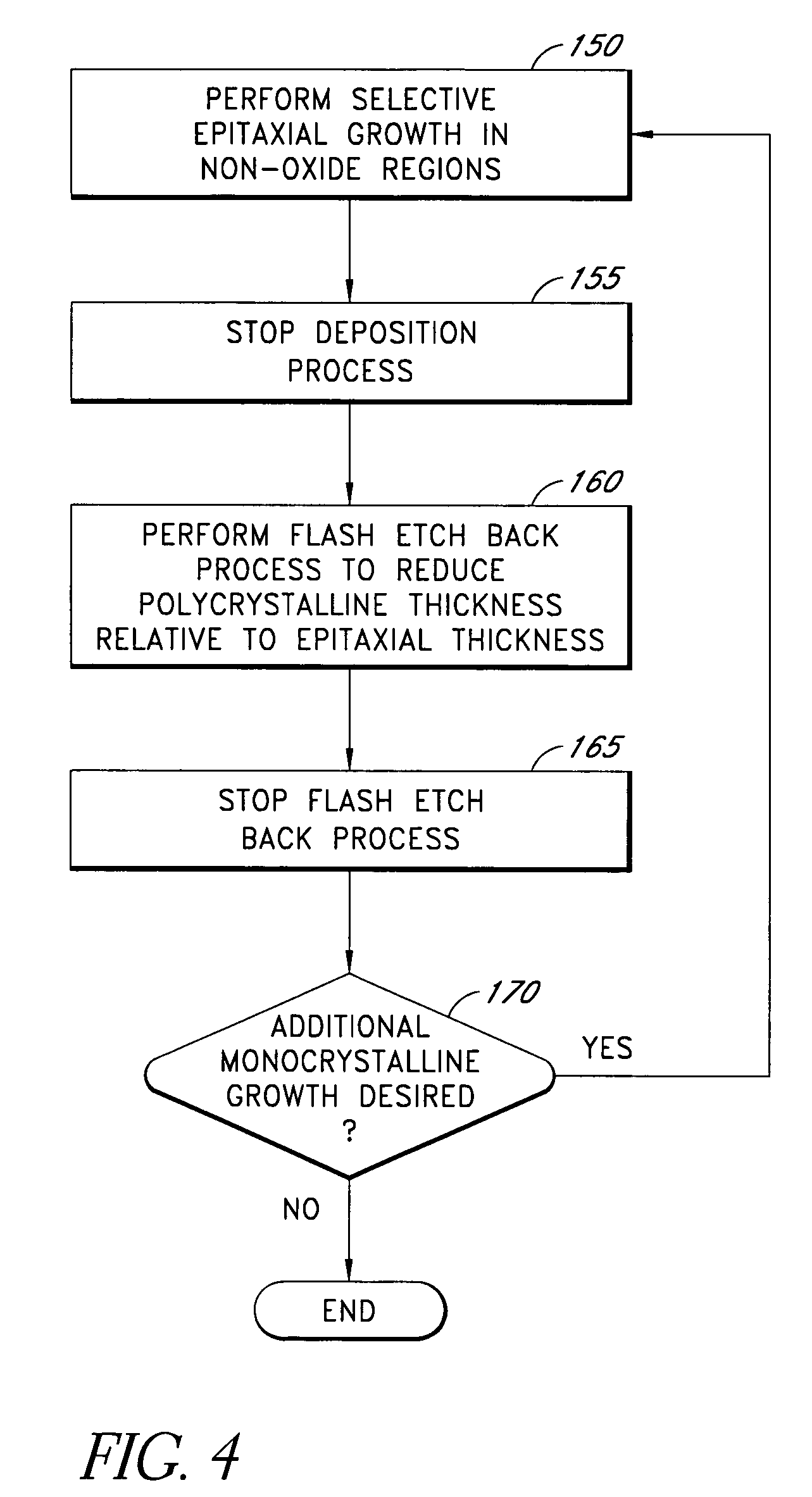Enhanced selectivity for epitaxial deposition
a selective deposition and epitaxial technology, applied in the direction of single crystal growth, semiconductor devices, chemistry apparatus and processes, etc., can solve the problems of unsuitable polycrystalline silicon on the gate, gate shortening to the elevated source and drain region,
- Summary
- Abstract
- Description
- Claims
- Application Information
AI Technical Summary
Benefits of technology
Problems solved by technology
Method used
Image
Examples
Embodiment Construction
[0020]As expounded in detail below, the present disclosure provides methods of fabricating an improved ESD structure. In particular, the present disclosure provides methods for reducing unwanted polycrystalline silicon deposition on a gate region during formation of an elevated ESD structure. However, one of ordinary skill in the art will recognize that the methods disclosed herein also can be applied to any deposition process wherein epitaxial deposition is desired in a first region, while controlled non-epitaxial deposition at a different rate is desired in a second region. “Controlled” deposition, as used herein, means that the rate of deposition in the second region can vary from 0% to nearly 100% of the rate of epitaxial deposition in the first region.
[0021]FIG. 1 illustrates the basic structure of a conventional field effect transistor 100. The field effect transistor 100 comprises a substrate 102 and shallow trench isolation regions 104. The substrate 102 is formed of any of ...
PUM
 Login to View More
Login to View More Abstract
Description
Claims
Application Information
 Login to View More
Login to View More - R&D
- Intellectual Property
- Life Sciences
- Materials
- Tech Scout
- Unparalleled Data Quality
- Higher Quality Content
- 60% Fewer Hallucinations
Browse by: Latest US Patents, China's latest patents, Technical Efficacy Thesaurus, Application Domain, Technology Topic, Popular Technical Reports.
© 2025 PatSnap. All rights reserved.Legal|Privacy policy|Modern Slavery Act Transparency Statement|Sitemap|About US| Contact US: help@patsnap.com



